Switch to the mobile version of this page.
Vermont's Independent Voice
- News
- Arts+Culture
- Home+Design
- Food
- Cannabis
- Music
- On Screen
- Events
- Jobs
- Obituaries
- Classifieds
- Personals
Browse News
Departments
Browse Arts + Culture
View All
local resources
Browse Food + Drink
View All
Browse Cannabis
View All
-
Business

Cannabis Company Could Lose License for Using…
-
Culture

'Cannasations' Podcaster Kris Brown Aims to 'Humanize'…
-
True 802

A Burlington Cannabis Shop Plans to Host…
-
Business

Judge Tosses Burlington Cannabiz Owner's Lawsuit
-
Health + Fitness

Vermont's Cannabis Nurse Hotline Answers Health Questions…
Browse Music
View All
Browse On Screen
Browse Events
Browse Classifieds
Browse Personals
-

If you're looking for "I Spys," dating or LTRs, this is your scene.
View Profiles
Special Reports
Pubs+More
Vive le Verbec: Seven Days' Field Guides to Visiting Summertime Québec
Published June 21, 2023 at 10:00 a.m.
Bonjour-hi!" Québec's signature greeting brings a thrill each time I cross the international border. While French gets top billing for the official business, Québec is a multicultural whirl, and — especially in Montréal — many residents are prone to slip, mid-sentence, from one language to the next. The result is a delightfully local patois you won't find anywhere else in the world. After countless cross-border trips, I now hear bonjour-hi as a signal of good things to come, whether I'm traveling for canal-side cycling, forest spas, circus shows or bagels hot from a wood-fired oven.
For this issue, Seven Days asked staff and freelance writers from both sides of the line to delve into the Québécois experiences that inspire them, from professional sports to encounters with Indigenous cultures. Their stories serve as summertime field guides, with tips on seeking dark-sky campsites, kid-friendly fun and cheesemaking monks within day-tripping distance of Burlington. The accessibility of these northbound adventures recalls a term I learned from Vermont artist Julia Vallera, who created this issue's cover art and illustrations: Verbec. Despite substantial differences, Vermont and Québec's commonalities in culture, language and history far predate the international border. It's true that Canada is another country. But Verbec is still home turf, a shared geography that rewards both curiosity and exploration.
There's another reason my mind's been on Québec. As a lifelong traveler, I've often put faraway continents on the top of my list, but that's begun to change. Like many Vermonters, I'm assessing the environmental costs of long-haul journeys and working to limit my carbon-intensive flights. Turning to the vast province next door has proved a fruitful way to savor travel's considerable joys while reducing those impacts — and is a timely reminder that there's plenty left to discover a bit closer to home. If you're planning a first cross-border trip or looking for fresh takes on favorite haunts, read on for the ways we'll be touring la belle province this summer. Grab your passport and vive le Verbec!
— Jen Rose Smith
Creatures Great and Small
Animal encounters and other kid-friendly activities
Bonnie stuck her tongue out at the boys, but they didn't seem to mind. She was literally eating right out of their hands. One of three African giraffes at Parc Safari in Saint-Bernard-de-Lacolle, Bonnie injured her cheek a few years ago. Even after the wound healed, her 20-inch tongue continued to dangle, like a meaty necklace, below her chin. Perhaps Bonnie realized that her goofy appearance earned more treats from sympathetic visitors.
It's not every day that kids get to look a giraffe in the eye from a raised terrace. Or stand in a plexiglass tunnel beneath a pair of snoozing white lions. Or get a bird's-eye view of rambunctious young Japanese macaques as they chase and grapple with each other like professional wrestlers. For the 11th birthday of my son, Ezra, we brought him and four friends a few miles north of the U.S.-Canada border to Québec's safari park, just a 70-minute drive from Burlington.
Since it opened in 1972, Parc Safari has averaged 300,000 visitors annually, according to owner Jean-Pierre Ranger, though three years of COVID-19 restrictions and border closures temporarily decimated attendance. Ranger, a spry 80-year-old, has worked at the park off and on since 1972 and bought it outright in 2002. He's made it his life's mission to conserve and protect the 40 to 50 species in his charge, many of which are on the endangered list.
Most of Parc Safari's critters don't live in pens or small cages. The expansive park comprises hundreds of acres where elephants, zebras, cheetahs, water buffalo, camels and other land mammals can roam. Visitors drive their own vehicles through the winding safari section or ride in one of the park's new open-sided electric bush trucks. The latter are an easier and greener way to interact with the animals.
Typical of tweens, our boys paid close attention to the scatological functions of the creatures we encountered, snapping hundreds of photos of animal butts. And though we visited before the water park's June 23 opening, we'll likely return this summer to experience it. We might even spend a night in one of the modern CoolBox cabins on-site, which offer air conditioning, kitchenettes, bathrooms, showers and queen-size bunk beds.
Parc Safari is only the nearest kid-friendly animal attraction in Québec. With a slightly longer drive, Vermonters can experience Zoo de Granby, Québec's largest zoo, home to more than 1,800 animals from four continents, including snow leopards, red pandas, hippos, stingrays and kangaroos. The Montréal Biodôme, located in the city's Olympic Park, has replicated five ecosystems with their native dwellers: a tropical rainforest, a Laurentian maple forest, the Saint Lawrence marine ecosystem, coastal Labrador and South America's subantarctic islands. The Biodôme is one of four facilities comprising Space for Life, Canada's largest natural science museum complex, which also includes the Montréal Insectarium, the Rio Tinto Alcan Planetarium and the Montréal Botanical Garden. All are excellent for kids (the first three, especially, when the weather favors indoor activities).
While in Montréal, catch a ride on La Grande Roue de Montréal, a 200-foot-tall observation wheel with enclosed, climate-controlled cabins that offer breathtaking views of the city. Be sure to book your tickets online in advance (and, in winter, to bring ice skates for cruising the nearby rink). From spring through fall, the thrilling MTL Zipline is right next door.
Older and more adventuresome kids can head to Maeva Surf in Laval, a cool way to hang 10 on indoor waves or practice snowboard tricks before the mountain slopes reopen. The center offers individual instruction and group packages for birthday parties and company outings.
Parents looking for a more relaxed family-friendly option should consider a visit to Exporail, the Canadian Railway Museum, located just south of Montréal in Saint Constant. Featuring miniature and life-size trains from antique to modern, including rideable streetcars and passenger trains, the museum offers a fascinating journey through the history of Canadian railroads. All aboard!
Points North
- Parc Safari, 242 Rang Roxham, Saint-Bernard-de-Lacolle, parcsafari.com/en
- Zoo de Granby, 1050 boulevard David-Bouchard Nord, Granby, zoodegranby.com/en
- Montréal Biodôme, 4777 avenue Pierre-de Coubertin, Montréal, espacepourlavie.ca/en/biodome
- Montréal Insectarium, 4581 rue Sherbrooke Est, Montréal, espacepourlavie.ca/en/insectarium
- Rio Tinto Alcan Planetarium, 4801 avenue Pierre-de Coubertin, Montréal, espacepourlavie.ca/en/planetarium
- Montréal Botanical Garden, 4101 rue Sherbrooke Est, Montréal, espacepourlavie.ca/en/botanical-garden
- La Grande Roue de Montréal, 362 rue de la Commune Est, Montréal, lagranderouedemontreal.com
- MTL Zipline, Hangar 16, 363 rue de la Commune Est, Montréal, mtlzipline.com
- Maeva Surf, 2005 boulevard Daniel-Johnson, Laval, maevasurf.com/en
- Exporail, the Canadian Railway Museum, 110 rue Saint-Pierre, Saint-Constant, exporail.org/en
— Ken Picard has been a Seven Days staff writer since 2002.
Indigenous Québec
Visiting a First Nations community reclaiming — and sharing — traditional stories
click to enlarge 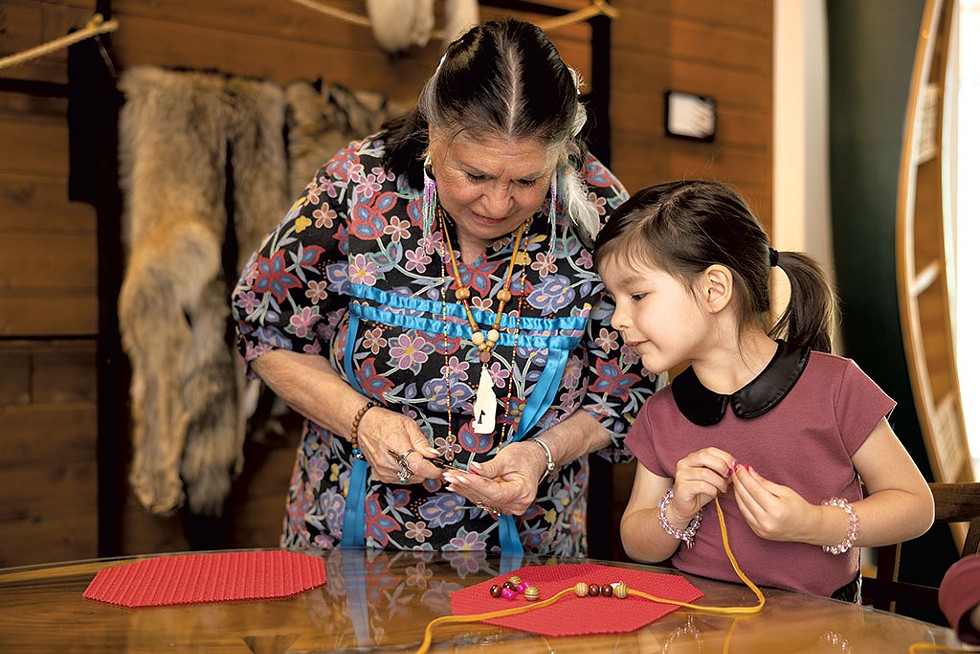

- Courtesy Of Stephane Audet
- Diane Picard (left) leading a traditional jewelry workshop
Night had just fallen, and I was strolling a forest trail in Wendake, a Huron-Wendat village located 15 minutes outside Québec City. Every few hundred feet I stopped and watched as lights, sound and video projections transformed my surroundings. A bare hill became a cornfield; warriors ran toward me, then disappeared into the forest; colorful flowers bloomed around a group of women who each seemed to fix me with a calm stare. The scratchy, archival recording of a Wendat man singing raised goose bumps.
The recording was part of Onhwa' Lumina, a 0.7-mile multimedia night walk that debuted in 2022 as a collaboration between the Huron-Wendat Nation and Montréal's Moment Factory entertainment studio. It uses modern technologies to interpret the Nation's traditional stories, touching on themes such as life cycles and the transmission of knowledge.
It's also the latest in a wide range of Indigenous tourism offerings in Québec, which is home to 11 Nations and 55 communities that stretch from the international border to the Arctic. (In Québec, "Indigenous" refers to both the First Nations and Inuit of the province.) Two hours from Burlington is the Mohawk community of Kahnawà:ke, where visitors can learn about the Haudenosaunee Confederacy at the Kanien'kehá:ka Onkwawén:na Raotitióhkwa Language and Cultural Center or sip a beer at Kahnawake Brewing, the first Indigenous-owned microbrewery on a First Nation's territory in Canada. Kahnawà:ke's July 8 and 9 Echoes of a Proud Nation Pow-Wow, which will bring competitive dancers from around the region, is just one of 21 events on this year's Indigenous Tourism Québec Pow-Wow Trail.
Farther east — and a three-hour drive from Burlington — is Mont-Ham Regional Park, which has partnered with the Grand Conseil de la Nation Waban-Aki to offer tepee accommodation and an Abenaki culture discovery trail. But Wendake remains one of the most accessible places in Québec for in-depth encounters with a First Nation culture, well worth the four-hour drive from Burlington — particularly if you can spend the night at the on-site Hôtel-Musée Premières Nations or dine at La Traite, a riverside restaurant highlighting Indigenous ingredients and cooking techniques.
I began my visit to Wendake at Onhoüa Chetek8e Huron Traditional Site, where guide Noémie Gros-Louis Sioui, dressed in a synthetic version of a traditional deerskin dress, led me around a reconstructed village and explained how Wendat lived before contact, from methods of food preservation to their matriarchal social structure. As we walked, I spotted an inukshuk, a stone structure traditionally used by the Indigenous peoples of the North American Arctic, and a tepee, a dwelling largely associated with the faraway plains.
"We put them here to explain that we don't use them," Gros-Louis Sioui explained. For too long, she said, stereotypes have obscured Indigenous peoples' true diversity. Visitors come expecting tepees and eagle-feather headdresses. The Wendat use longhouses, not tepees; turkey feathers, not eagle. "People think that we're all the same," Gros-Louis Sioui said, putting her hands on her hips for effect, "but we educate."
Later, surrounded by animal hides in the National Ekionkiestha' Longhouse, 17-year-old Diego Gros-Louis played a drum, sang and told captivating Wendat legends about the creation of the world and the Pleiades star cluster — it's part of Wendake's First Nations Myths & Legends experience, which, like the site tour and handicraft workshops, can be booked online. Wendat storyteller Dominic Ste-Marie told me that sharing these stories is "an amazing engine of cultural revitalization." While the Wendat number only around 4,500 — down from 30,000 prior to colonization — Ste-Marie said Wendat culture is strengthening. The hopeful trend is embodied by Gros-Louis, who is learning the long-dormant Wendat language and pursuing a career in politics because, he said, "I love my Nation."
Ste-Marie said he sees tourism as a crucial link. "A culture is not something to gatekeep. It's something to be shared. When you share it, you don't lose it; you actually expand it," he said. "That's how we fall in love again with who we are. We discover, through the eyes of someone else, what we have."
Points North
- Wendake, tourismewendake.ca/en
- Kanien'kehá:ka Onkwawén:na Raotitióhkwa Language and Cultural Center, 2006 Old Malone Hwy., 2nd Floor, Kahnawake, korkahnawake.org
- Kahnawake Brewing, 22 Route 138, Kahnawake, kahnawakebrewing.square.site
- Mont-Ham Regional Park, 103 Route 257 Ouest, Ham-Sud, montham.ca/en
- Hôtel-Musée Premières Nations, 5 place de la Rencontre, Wendake, hotelpremieresnations.ca/en
- La Traite, 5 place de la Rencontre, Wendake, restaurantlatraite.ca/en
- Onhoüa Chetek8e Huron Traditional Site, 575 rue Chef Stanislas Koska, Wendake, huron-wendat.qc.ca/en
— Karen Gardiner is a freelance writer based in New York’s North Country.
Sports Seen
The beautiful game — and other pro sports — in Montréal
"Just follow the blue-and-gray shirts," I told my partner, as we walked crowded concrete paths through Montréal's Parc Olympique. Built for the 1976 Summer Olympics, the park's sprawling collection of venues now hosts sundry events. When we arrived on a sweltering Saturday evening, the dance rhythms of a Latin music festival echoed in the distance. But along with a sea of blue-and-gray-clad people, we were headed toward Stade Saputo, which serves a single purpose: hosting the Major League Soccer games of CF Montréal.
One of three Canadian clubs competing in the 29-team league that comprises the top level of American soccer, CF Montréal were known as the Montréal Impact when they joined MLS as an expansion team in 2012. Rebranded in 2021 as Club de Foot Montréal — shortened this year to CF Montréal — the team has yet to win an MLS Championship, but it finished second in the Eastern Conference last year, its best MLS season to date.
While CF Montréal are beloved, they're not the town's biggest major-league sports team. The Montréal Canadiens have won the Stanley Cup more times than any other National Hockey League franchise, and in 2022 the Montréal Alouettes snagged second-place ranking in the Canadian Football League. Opportunities to watch pros compete abound through Montréal's warm-weather months, too: In mid-June, the weekend-long Formula 1 Grand Prix is an annual blockbuster. This year, from August 4 to 13, visitors can see top women tennis players compete in the National Bank Open tournament. The free-to-access skateboarding and bouldering tour Jackalope, scheduled for August 25 to 27 at the Esplanade of the Olympic Stadium, will feature World Cup Skateboarding competitions between top riders including Ben Paterson and Itzel Granados. Part of the prestigious UCI World Tour, the September 10 Grand Prix Cyclistes de Montréal brings together cyclists from all 18 of the prestigious UCI WorldTeams.
CF Montréal's own regular season runs through October 21. When I visited in late May, most of Stade Saputo's 19,619 seats were full as the team walked out to face Inter Miami. Montréal looked confident with the ball but struggled to direct their shots on goal. Their leading scorer, Honduran striker Romell Quioto, was out with a hamstring injury. The second half saw a breakthrough when Nigerian striker Chinonso Offor made a daring feet-first slide to score in the 53rd minute, putting Montréal in the lead. So much for journalistic neutrality: I leapt from my seat in uncontrollable joy, engulfed in plumes of celebratory smoke emanating from the stands.
Tickets to see CF Montréal range from US$22 for seats behind the end lines to $260 box seats in the "Club du Président." (Directly behind each goal is a section reserved for nonstop standing and chanting, so if constant drumming isn't your thing, I'd recommend a seat along the sidelines.) Parking near the stadium costs around US$22, but if there's another event happening at the same time — say, a Latin music festival — you might find yourself sitting in the kind of traffic that most Vermonters are not emotionally equipped to endure. It's often quicker to park elsewhere in the city, then rent an e-bike or take the subway to the nearby Pie-IX metro station.
Why drive to Montréal for a game when we have two semiprofessional teams — Vermont Green FC and Vermont Fusion — to root for back home? For one, the MLS season lasts much longer; up north you can get an in-person soccer fix well into October. It's also a chance to see big names up close. Less than two weeks after their visit to Montréal, Inter Miami stunned the soccer world by successfully signing Argentinean superstar Lionel Messi, widely considered one of the greatest players of all time. It's incredible to think you'll soon be able to watch the man who just led Argentina to victory in the 2022 World Cup play in a small stadium less than two hours from the Vermont border!
Thanks to some truly heroic last-minute defending, CF Montréal held on to their one-goal lead to secure a victory against a pre-Messi-era Inter Miami. Chants of "olé, olé, olé" were still ringing out as we made our way toward the exit. I turned for a last look at the grass field, glistening under the lights and a Montréal night sky. Beautiful game, indeed.
Points North
- CF Montréal at Stade Saputo, 4750 rue Sherbrooke Est, Montréal, en.cfmontreal.com
- National Bank Open, omniumbanquenationale.com/en
- Jackalope, jackalope.tribu.co/montreal
- Grand Prix Cyclistes de Montréal 2023, gpcqm.ca
— Bryan Parmelee is a composer, performer and developer who is on the digital team at Seven Days.
Spectacular Sentiers
A local’s guide to the hiking trails of southern Québec
You can't escape the outdoors in vast northeast Canada. So, most Québécois embrace it. Even the region's most beloved foods, from gravy-topped poutine to smoked meat, seem designed for fueling big endeavors. With more than 6,800 miles of trails winding across the province, finding a right-size trek is as easy as sourcing a perfectly crisp croissant.
That's why, after hiking around the world, I keep returning to Québec's unparalleled blend of handsome forests and accessible summits. For those ready to truly go the distance, the 15,000-mile, cross-country Trans Canada Trail swings toward Vermont as it passes through the Eastern Townships communities of Granby, Magog and Sherbrooke. Much of this portion is multiuse (read: paved), so it is wonderful for wheelchair users or visitors with limited mobility. I like the 31-mile Montagnarde section linking Lac d'Argent and Chéribourg, which provides access to the maple forests iconic of this province.
Even beyond the TCT, that region of picturesque villages offers myriad trails, including multiday walking routes and family-friendly day strolls. For Montréalers like me, Mont-Orford National Park is a favorite for both hiking and lake swimming — and, at just over two hours from Burlington, it's one of Québec's closest national parks to Vermont. My preferred trail there is Le Mont-Chauve (Bald Mountain), a 6.6-mile loop hike leading to a barren summit with big views of deciduous canopy.
Another beloved Eastern Townships destination for hiking is Sutton, the artsy, foodie ski community that becomes a walker's paradise in the warmer months. Its main destination for hikers is the Parc d'environnement naturel de Sutton, featuring sparkling clear streams, two mountain ponds and four summits. First-time visitors to the park should opt for the three-mile Boucle des Lacs (Lake Loop) route. On a hot summer day, I bring my swimming gear for a mid-trail swim in Spruce Lake, located on a saddle between the neighboring peaks of Mont-Gagnon and Round Top.
Further east in the townships (and two hours, 20 minutes from Burlington), the region of Coaticook provides several stellar options, spanning light walking and mountaintop trekking. The longest suspended footbridge in North America is found at Parc de la Gorge de Coaticook and is a highlight of the 2.2-mile Gorge Trail. Consider staying overnight in the area to experience a multimedia light installation, called Foresta Lumina, at the gorge. The 1.5-mile night stroll takes visitors through a lantern-lit forest while holographic projections tell local legends, all set to an ethereal soundtrack.
Another good stop in the Coaticook area is Mont-Pinacle, a 2,181-foot summit that looms above Lake Lyster and is just a mile from the U.S.-Canada border. A 4.3-mile, round-trip hike to the top passes through peregrine falcon territory, and you might spot rock climbers scaling the adjacent cliff. Or try the freshly minted Massawippi River Valley Trails, part of the Massawippi Foundation's work to preserve lands adjacent to Lake Massawippi and its tributaries. The two-mile Scowen Park Trail is ideal for bird-watchers, as species such as goldfinches, grackles and woodpeckers can be spotted in the surrounding woodlands. The trail also highlights the long Indigenous history of the area, which is ancestral territory of the Wabanaki Nation.
Not all of Québec's trails are so deep in the countryside: Vermonters seeking to combine hiking with time in Montréal can consider the Mont-Saint-Bruno National Park, an oasis of biodiversity that's just 15 miles east of downtown. Its 17 miles of trails wrap through five lakes, passing a historic mill and orchard, and visitors can spot some 200 bird species. Folks with limited mobility can take the mile-long Le Petit-Duc trail, a wheelchair-accessible and stroller-friendly circular route of crushed stone framed by yellow birches and fireweed. Once you're finished, those Montréal croissants are only a 45-minute car ride away.
Points North
- Trans Canada Trail, tctrail.ca
- Mont-Orford National Park, 200 chemin du Camping, Orford, sepaq.com/pq/mor
- Parc d'environnement naturel de Sutton, 800 chemin Réal, Sutton, parcsutton.com/en/trails
- Parc de la Gorge de Coaticook, 400 rue Saint-Marc, Coaticook, gorgedecoaticook.qc.ca/en
- Parc Harold F. Baldwin (Mont-Pinacle), 1891 chemin May Baldwin Mills, Coaticook, parchfbaldwin.com
- Massawippi River Valley Trails, Capelton Road, North Hatley, massawippi.org/trails
- Mont-Saint-Bruno National Park, 30 Rang des 25 Est, Saint-Bruno, sepaq.com/pq/msb
— Daniel Baylis is a writer, photographer and adventurer living in Montréal.
Hydro Québec
How to dip a toe into Québec’s steamy hydrothermal spa scene
"Will we make it in time for aufguss?" I wondered aloud on a recent afternoon, beelining north from Burlington toward the Derby Line border crossing. Riding shotgun to an equally sauna-obsessed friend, I was rushing to reach Förena Cité Thermale, a hydrothermal spa in the Montréal suburb of Saint-Bruno-de-Montarville. Dodging work and childcare, respectively, we hoped to attend a 2:30 p.m. session of aufguss, a German sauna ritual involving music, scent and plenty of steamy hot air. "ETA 2:26," she replied, stepping on the accelerator. "I think we can do this."
Förena is the most recent addition to Québec's already impressive collection of hydrothermal spas, often called Nordic spas for their links to that region's bathing traditions. They're something of a specialty in the province, which is generally credited with sparking a Canada-wide hydrothermal trend in recent years. All combine heating and cooling elements, such as saunas, steam rooms and cold plunges, laid out in a prescribed "thermal cycle." Hot, cold, relax: Research points to resulting benefits for mental health, cardiovascular function and pain management. Many are day-tripping distance from northern Vermont, easy cross-border jaunts for a hit of heat and leisure.
I like Förena for its summer-camp-like schedule of aufguss, yoga classes and guided meditations — low-stakes activities that lend pleasant structure to a lazy afternoon. Otherwise, I'm a habitué of the more central Montréal spa scene, seeking out places to soak nearer to the city's restaurants and hangouts. Bobbing just off the Old Port is the beloved Bota Bota Spa-sur-l'Eau, an indoor-outdoor hydrothermal spa in a converted ferry boat with views of the city skyline and architectural landmark Habitat 67. A 10-minute walk away is Spa Scandinave Vieux-Montréal, a quieter enclave that offers a Finnish dry sauna, a thermal waterfall and a eucalyptus steam bath. Located on an island in the Saint Lawrence River, Strøm Spa Nordique Nuns' Island has an atmosphere of woodsy tranquility a short drive from downtown; hot waterfalls there tumble into the outdoor baths, and the saunas come in dry, aromatic, steamy and barrel varieties.
Strøm also has an outpost in the Eastern Townships, that vacationland patchwork of villages and vineyards hewing to Vermont's northern border. Befitting the area's laid-back energy is a cluster of hydrothermal spas dishing out steam in bucolic locales: Magog's Spa Nordic Station stands out for its enchanted-forest feel, with hammocks strung between trees and a nearby river for cold plunges; flotation on pristine Lake Gale is one of the summer treatment options at Balnea Spa + Réserve Thermale in Bromont.
With a bit of luck at the border, you can pull off Burlington to Magog in just over two hours, but Québec has a wealth of hydrothermal spas located in far-flung destinations well worth planning an overnight journey around. Urban Moonshine founder Jovial King, whose Nordic-style Silt Bathhouse is slated to open on Burlington's Pine Street in 2025, said her preferred north-of-the-border spas are Strøm Spa Nordique Vieux-Québec and Sibéria Spa, both located in the provincial capital of Québec City, a four-hour drive northeast from Burlington. "Those are my favorites," King said. "I've been to many, many of them, and those both really rise to the top."
Like its Montréal and Eastern Townships counterparts, Strøm Spa Nordique Vieux-Québec is a sleek, indoor-outdoor place to lounge; its location by the Saint Lawrence means views of drifting river ice all winter long. In a small wood north of the city, the walk-in-only Sibéria Spa has a forested site illuminated after dusk by flickering firepits.
When time is limited, though, there's nothing like a day trip. "Why are you going to Canada?" asked a Québécois official when we reached the Derby Line border crossing. "Spa!" we chorused. Our bags held the hydrothermal spa essentials: passports, bathing suits, sandals, and refillable water bottles to stay hydrated as we cycled in and out of the heat. He waved us through, and we pressed northward toward Montréal with our eyes on the clock. We parked at Förena with five minutes to spare, sliding onto the sauna's warm wooden benches just as the door closed behind us, and afternoon aufguss commenced.
Points North
- Förena Cité Thermale, 250 Rang des Vingt-Cinq Est, Saint-Bruno-de-Montarville, forena.ca/en
- Bota Bota Spa-sur-l'Eau, between McGill et rue de la Commune Ouest, Montréal, botabota.ca/en
- Spa Scandinave Vieux-Montréal, 71 rue de la Commune Ouest, Montréal, scandinave.com/vieux-montreal
- Strøm Spa Nordique Nuns' Island, 1001 boulevard de la Forêt, Verdun, stromspa.com/ile-des-soeurs/en
- Spa Nordic Station, 285 chemin des Pères, Magog, spanordicstation.com/en
- Balnea Spa + Réserve Thermale, 319 chemin du Lac Gale, Bromont, balnea.ca/en
- Strøm Spa Nordique Vieux-Québec, 515 boulevard Champlain, Québec, stromspa.com/vieux-quebec/boutique/en
- Sibéria Spa, 339 rue de Genève, Québec, siberiaspa.com/en
— Jen Rose Smith is a travel writer living in Vermont.
Big on Bikes
Scenic rides to Québec art, nature, cuisine and culture
A Friday evening in early June found me pedaling in a sea of riders, past bewildered motorists who'd missed the news: It was opening night of the annual Go Bike Montréal Festival, a week that transforms the city into a playground for cyclists. Laughing and chatting in French and English, we had donned colorful and sparkly cycling wear for the festival's after-dark Tour la Nuit, a 15-mile ride across six of Montréal's 19 boroughs.
Bike lights flashing and bells ringing, we passed through leafy streets, wide boulevards, highways, industrial areas and neighborhood parks. A few days later would be the festival's main event, the 29-mile Tour de l'Île de Montréal, which explores seven boroughs on car-free roads with stops at city parks for ice cream and entertainment breaks. Along the way, spectators yell: "T'es capable!" You've got this.
The festival energy signals Québec's enthusiasm for cycling culture. From urban trails to country lanes, there are ever-growing opportunities to explore the province on two wheels, as I've done for more than a decade. Montréal alone has in excess of 435 miles of bicycle paths, accessible on your own bike or by renting wheels at the 611 BIXI Montréal bike-share stations around the city. (BYO helmet.) One highlight of the urban network is the flat and scenic 8.7-mile Lachine Canal Bike Path, which hugs the 19th-century waterway and passes five historic locks as it travels southwest from the old port to the borough of Lachine. I like to stop en route at the art deco Atwater Market, picking up a picnic lunch to enjoy on a canal-side park bench.
Cyclists exploring beyond the city can opt instead for sections of La Route Verte, a 3,293-mile network of signed cycling paths and bike lanes that make up the longest cycling route in North America. Like the Go Bike Montréal Festival, it's a project of cycling-advocacy group Vélo Québec; as its surfaces range from smooth pavement to crushed stone, some legs are best approached on a hybrid or mountain bike.
In the Laurentian Mountains north of Montréal is a spectacular off-road segment of La Route Verte called the P'tit Train du Nord — the 144-mile rail trail follows a former train line that once shuttled skiers to the popular resort area. The mostly paved route passes through attractive small towns, such as woodsy and peaceful Sainte-Adèle, with cycling services available throughout. Cyclists hoping to ride the whole route can stay at inns or campgrounds along the way, and there are even shuttle services to whisk riders, bikes and bags to the start of the trail.
Closer to Vermont are scenic Route Verte sections through the Eastern Townships: My favorite ride might be the mostly off-road, 35-mile Artria Cultural Loop that can be accessed from the towns of Granby, Bromont or Waterloo. More than 60 giant works of art are on display along the way, and it's worth taking time for swimming at Yamaska National Park or bird-watching at Lac Boivin. The scenic southern portion of the Artria Cultural Loop also forms part of Québec's 146-mile, mixed-surface Véloroute Gourmande, which was founded in 2022 and highlights accommodations, camping and 130 official food stops on the way from Montréal to Sherbrooke. Delicious specialties abound, with highlights including artisanal cheese, craft beer, wine, cider, maple syrup, lavender, chocolate and meat pies. With those culinary delights as motivation, you might go farther than you think. T'es capable.
Points North
- Go Bike Montréal Festival, velo.qc.ca/en/event-category/go-bike-montreal-festival
- BIXI Montréal, bixi.com/en
- Atwater Market, 138 avenue Atwater, Montréal, marchespublics-mtl.com/en/marches/atwater-market
- La Route Verte, routeverte.com/en
- P'tit Train du Nord, ptittraindunord.com/en
- Artria Cultural Loop, easterntownships.org/cycling/circuit/7/artria-cultural-loop
- Yamaska National Park, 1780 boulevard David-Bouchard, Roxton Pond, sepaq.com/pq/yam
- Lac Boivin, easterntownships.org/things-to-do/590/centre-d-interpretation-de-la-nature-du-lac-boivin
- Véloroute Gourmande, veloroutegourmande.com
— Sherel Purcell covers Québec travel for USA Today’s 10Best and other outlets.
Eat, Drink, Eastern Townships
Distinctive flavors just across the international border
"It feels different here, right?" I was driving with a friend from my Québec City home past the farms, vineyards, forests and small towns of the Eastern Townships, a region of Québec that hugs the Vermont and New Hampshire borders. The Sutton mountains stood guard in the distance. A certain calm prevailed. Life feels slow to me in the Eastern Townships, which are also distinct for their history and culture.
They're more English, for one. After the American Revolution, loyalists settled here, followed by British and Irish colonists. By 1871 the towns were almost entirely francophone, but over time English and French communities found an equilibrium uncommon in other parts of the province. Today, they're best known for food, wine, craft beer and crisp ciders.
As a Québec City-based food writer, I make frequent trips here, hungry for cheeses made by Benedictine monks and sustainable cold-smoked trout from Ferme Piscicole des Bobines. On my most recent trip I headed to Brome-Missisquoi, the part of the Eastern Townships where modern Québec viticulture was established in the 1970s. Its 22-vineyard Wine Route, which is celebrating its 20th anniversary this year and can be explored by car or bicycle, is just over an hour from Burlington and offers an ideal introduction to the region's flavors. Most vineyards are open daily from June through October.
For Vermonters, among the most accessible destinations along the wine route is Frelighsburg, where the organic vines and fruit trees of Clos Saragnat stretch out at the foot of lakeside Mont-Pinacle. It was here that Christian Barthomeuf established the first commercial vines in Québec in 1978. Barthomeuf is also known as the inventor of ice cider, the sweet-tart elixir made by fermenting the concentrated juice of frozen apples. I made it my first tasting stop: As the ice cider slid over the tip of my tongue, I tamed the drink's sweetness with a slice of salty blue cheese made at Abbaye de Saint-Benoît-du-Lac.
I had picked up the cheese from gourmet épicerie La Rumeur Affamée, a favorite destination for local treats with locations in Frelighsburg, Dunham and Sutton. (The store is a real-world inspiration for the fictional Sarah's Boulangerie, a key location in Louise Penny's mystery novels.) Québec cheeses, pastries and charcuterie fill their antique counters and displays, along with local wines and fresh-baked baguettes. We'd also bought some Brise des Vignerons, a luxuriously soft local cheese with notes of mushroom and butter.
Next on our tasting list was Dunham's Vignoble de l'Orpailleur, which was established in 1982 and is one of the oldest wineries in Québec. Its chardonnay and gewürztraminer wines alone deserve a trip, and tastings can be enjoyed on the outdoor terrace overlooking the vineyard. From there, a 30-minute drive northeast would lead to Léon Courville, the largest winery on the route. Its rows of vines slope toward Lac-Brome, with mounts Glen and Foster standing majestically in the distance. They produce red, white and rosé wines, plus ice wines and bubbly. For something special, try one of the black-label Réserve wines — my favorite, Réserve Baco, is made from cold-hardy Baco noir grapes and has delicious notes of cherry, blueberry and chocolate. It's perfect with a dinner of confit duck leg, which I bring home from nearby duck farm Canards du Lac Brome.
For a perfect finale to a gourmet day in the Eastern Townships, head to Sutton, a mountain village known for its food and drink. Round Top Bagels is a popular stop for Montréal-style bagels, sandwiches and wood-fired pizza; just up the street, Kokkaku Ramen serves deep bowls of umami-rich ramen. But we stopped instead at La Réserve Naturelle wine shop, a specialist in natural wines that also carries a wide range of ciders and beers. By then, our cooler was packed with wine, charcuterie, cheeses and duck. It was time to head home for an extended wine tasting, one with a side of Eastern Townships terroir.
Points North
- Ferme Piscicole des Bobines, 1 rue Saint-Henri, East Hereford, lesbobines.com
- Brome-Missisquoi Wine Route, laroutedesvins.ca/en
- Clos Saragnat, 100 chemin de Richford, Frelighsburg, saragnat.com
- Abbaye de Saint-Benoît-du-Lac, 1 rue Principale, Saint-Benoît-du-Lac, abbaye.ca
- La Rumeur Affamée, 16 rue Principale, Frelighsburg; 3809 rue Principale, Dunham; 15 rue Principale Nord, Sutton
- Vignoble de l'Orpailleur, 1086 rue Bruce, Dunham, orpailleur.ca
- Léon Courville, 285 chemin de Brome, Fulford, leoncourville.com/en/home
- Canards du Lac Brome, 40 chemin du Centre, Knowlton, canardsdulacbrome.com/en
- Round Top Bagels, 1 principale Sud, Sutton, facebook.com/roundtopbagels
- Kokkaku Ramen, 19 rue Principale Nord, Unit 3/4, Sutton, kokkaku-ramen.business.site
- La Réserve Naturelle, 1 rue Principale Sud, Sutton, facebook.com/reservenaturellecaviste
— Pamela MacNaughtan is a travel and food writer based in Québec City.
Camping à la Québécois
A Vermonter goes north for a night outside
As I rolled into Québec's Mont-Orford National Park with a carful of camping gear, I worried I'd read the park website incorrectly. The landscape looked rustic: forest, lake, eponymous mountain. But the visitors' center, an architecturally stylish structure with a sleek patio and sculpture garden, was abuzz with families and spandex-clad cyclists. RVs traversed the lot. The scene was slicker than those I'd encountered in Vermont's state parks. It seemed to suggest an expansive definition of "camping."
As it turned out, I'd chosen well when I booked my tent retreat a couple hours' drive from Burlington. It served as a fitting introduction to what camping in Québec has to offer, a distinctly customizable outdoor experience with options that range from remote tent sites to wall tents and wheelchair-accessible cabins. All camping in the province's national parks is bookable through Sépaq, which stands for Société des établissements de plein air du Québec, or Society of Outdoor Establishments of Québec. Through its website, I'd secured a camp rustique booking in an area of Mont-Orford National Park called La Vallonnier, a 2.5-mile hike from the main visitors' center. There, I found 14 wooden tent platforms clustered around two communal firepits.
Though it lacked the privacy of deeper backcountry, the site was far enough from the park's cycling and walking trails to feel secluded. Most importantly, La Vallonnier is situated near the trailhead for an intermediate-level 2.5-mile hike to the 2,000-foot summit of Mont-Chauve, where I enjoyed an expansive view across the parklands. The next day, at an information center by Lake Stukely, I met Émilie Levasseur and Stéphane Poirier, a thirtysomething couple from Québec City. Experienced Sépaq campers, they had just bagged the 2,799-foot Mont-Orford Massif, the park's highest peak. "Sépaq does a good job of making you feel like you're in the wilderness," Levasseur said. "You feel like it's part of a unified system," Poirier added, praising Sépaq's reliability. That system includes more than 7,000 campsites, perched near sandy beaches, rolling mountains and deep fjords.
Levasseur couldn't pick a Sépaq favorite, but Poirier didn't hesitate: "My heart belongs to Gaspésie," he said, referring to the national park at the northern tip of the Gaspé Peninsula, founded in 1937 as a wildlife preserve for caribou. The nine-hour drive from Vermont makes Gaspésie National Park a "reach" trip — but one whose destination is a unique landscape of alpine plants and tundra. The pair also complimented the camping opportunities at Mont-Mégantic National Park, a little over three hours from Burlington. This stellar destination is the world's first International Dark Sky Reserve. Summer activities at its ASTROlab observatory include viewing evenings and educational programming, and from July 6 to 8 it draws stargazers for an Astronomy Festival.
Other camping destinations highlight Québec's extraordinary geographical diversity, including the estuary ecosystem in the Saguenay Fjord National Park, Mont-Tremblant National Park's 400 lakes and streams, Yamaska National Park's Appalachian lowlands and Oka National Park wetlands. Park lodging, from rustic tent platforms to chic chalets, makes room for campers with varied levels of outdoor experience (and equipment). Perhaps the most straightforward step up from camping in your own tent — and great for small groups — are the widely available ready-to-camp sites with fixed tents, which I saw arrayed around Lake Stukely on my Mont-Orford trip. These feature beds (but no bedding), space heaters and cookers. Some sites, such as the ready-to-camp options at Oka National Park — about an hour's drive west of Montréal — are not only wheelchair-accessible but also include other adaptive features, such as recreational equipment and washroom facilities.
I chose a familiar-to-me forest-and-tent combo for my escape to Québec. Maybe next time I'll rent a fat bike or a pedal boat and stay in one of the curious, cubic, big-windowed ready-to-camp sites I spotted at Lake Stukely. Daniel Boone meets Bauhaus. Sign me up.
Points North
- Mont-Orford National Park, 3321 chemin du Parc, Orford, sepaq.com/pq/mor
- Sépaq, sepaq.com
- Gaspésie National Park, 1981 route du Parc, Sainte-Anne-des-Monts, sepaq.com/pq/gas
- Mont-Mégantic National Park, 189 route du Parc, Notre-Dame-des-Bois, sepaq.com/pq/mme
- Saguenay Fjord National Park, 91 rue Notre-Dame, Rivière-Éternité, sepaq.com/pq/sag
- Mont-Tremblant National Park, 3824 chemin du Lac Supérieur, Lac-Supérieur, sepaq.com/pq/mot
- Yamaska National Park, 1780 boulevard David-Bouchard, Roxton Pond, sepaq.com/pq/yam
- Oka National Park, 54 chemin des Collines, Oka, sepaq.com/pq/oka
— Erik Esckilsen is a Vermont author and Champlain College professor.
Back East
The long trip to eastern Québec’s riverside villages, whales and gulf beaches
Even for a born-and-raised Montréaler like me, the eastern side of Québec is a place apart. The region, which extends from wolf-haunted forests to windswept islands, simply feels less tame than the west. Québécois accents grow stronger here — in some parts of the Gaspésie, you can hear the strains of Acadian French descended from the language of 17th- and 18th-century settlers. It's a long way from Vermont. But for visitors with several days or more to explore, a trip to eastern Québec offers rich rewards.
Not long ago, in search of some wildness myself, I followed the Trans-Canada Highway, then Route 132, eastward from Québec City, watching as the landscape grew greener and emptier. Hugging the southern edge of the Saint Lawrence River, Route 132 is more whimsically called La Route des Navigateurs, or the seafarers' route, and it serves as the gateway to waterside villages of the Bas-Saint-Laurent and the Gaspésie's world-class hiking. With each passing mile, the waters of the Saint Lawrence become saltier as they flow toward the sea.
Perhaps the most picturesque village in the Bas-Saint-Laurent region is riverfront Kamouraska, a meadow- and farmland-wrapped community that's a five-hour drive from Burlington. Known to locals as le doux pays, "the sweet land," it's famed for fabulous sunsets and is the setting for an eponymous historical novel that's a Québécois literary touchstone. Bright Victorian homes sporting gabled roofs and wraparound verandas line its main street, alongside boutiques and gourmet eateries. One favorite is the flower-draped Boulangerie Niemand, beloved for its artisanal breads and pastries.
La Route des Navigateurs eventually brings travelers to Gaspésie (Gaspé Peninsula), long a favorite summertime escape. In this maritime region in the far reaches of eastern Québec, colorful clapboard cottages follow the shore. The distinctive notes of traditional and contemporary Gaspésienne folk music can be heard at the area's annual Festival en Chanson de Petite-Vallée, taking place this year from July 28 to August 5. While Gaspésie National Park is a nearly nine-hour drive from Burlington, it's worth the journey for access to spectacular trails through a refuge encompassing tundra and venerable old stands of balsam fir.
The river's north shore, meanwhile, is a haven of another kind. Generations of artists, writers and summer cottagers have sought the painterly landscapes of its Charlevoix region, where Baie-Saint-Paul is a cultural hub around five hours from Burlington. Art galleries and craft boutiques lend the historic community a bohemian feel. This summer is the 100th anniversary of Québécois painter Jean-Paul Riopelle's birth, and two Charlevoix museums are marking the occasion with major Riopelle exhibitions: You can find his work at the Baie-Saint-Paul Museum of Contemporary Art and the Musée de Charlevoix in nearby La Malbaie. Also debuting this summer is zero-emissions rail travel along the Train de Charlevoix between Québec City and Baie-Saint-Paul, the first passenger train in North America powered entirely by green hydrogen.
From there, the landscape gets woolier as you travel north and east toward the Saguenay-St. Lawrence Marine Park, frequented by migratory whales and local belugas from May through October. A hub for whale-watching tours is Tadoussac, where wildlife seekers head to sea, visit the excellent Marine Mammal Interpretation Center and spot minkes from shore while walking the 0.6-mile Pointe de l'Islet Trail.
Even farther afield in eastern Québec are Les Îles de la Madeleine, or the Magdalen Islands, an archipelago of eight islands in the Gulf of St. Lawrence. Furry white harp seal pups born on nearby ice floes draw visitors in February, but in summer les îles are beloved for their rugged red cliffs, grassy sand dunes and almost 200 miles of fine, white-sand beaches whose water can reach a swimmable 64 degrees. Just getting there is an adventure: You can choose between the five-hour ferry from Prince Edward Island and summer-only direct flights from Montréal and Québec City.
Despite a fine drizzle back in Bas-Saint-Laurent, the sun pierced through the clouds, painting the sky with orange and pink streaks — one of those famous riverside sunsets I heard so much about. Leaving Kamouraska behind, I set a course in the direction of Gaspésie, traveling seaward into the darkening east.
Points North
- La Route des Navigateurs, routedesnavigateurs.ca/en
- Boulangerie Niemand, 82 avenue Morel, Kamouraska, facebook.com/boulangerieniemand
- Festival en Chanson de Petite-Vallée, festivalenchanson.com
- Gaspésie National Park, 1981 route du Parc, Sainte-Anne-des-Monts, sepaq.com/pq/gas
- Baie-Saint-Paul Museum of Contemporary Art, 23 rue Ambroise-Fafard, Baie-Saint-Paul, macbsp.com
- Musée de Charlevoix, 10 chemin du Havre, La Malbaie, museedecharlevoix.qc.ca
- Train de Charlevoix, 5300 boulevard Sainte-Anne, Québec, traindecharlevoix.com
- Saguenay-St. Lawrence Marine Park, 182 rue de l'Église, Tadoussac, parks.canada.ca/amnc-nmca/qc/saguenay
- Marine Mammal Interpretation Center, 108 rue de la Cale Sèche, Tadoussac, gremm.org/en
— Elizabeth Warkentin is a freelance journalist and photographer based in Montréal.
Got something to say?
Send a letter to the editor
and we'll publish your feedback in print!
Tags: Québec Guide, Québec Issue, Parc Safari, Zoo de Granby, Montréal Biodôme, Olympic Park, Montréal Insectarium, Rio Tinto Alcan Planetarium, Montréal Botanical Garden, La Grande Roue de Montréal, MTL Zipline, Maeva Surf, Exporail, Canadian Railway Museum, Wendake, Onhwa' Lumina, Kahnawà:ke, Kanien'kehá:ka Onkwawén:na Raotitióhkwa Language and Cultural Center, Kahnawake Brewing, Pow-Wow Trail, Mont-Ham Regional Park, Hôtel-Musée Premières Nations, La Traite, Onhoüa Chetek8e Huron Traditional Site, National Ekionkiestha' Longhouse, CF Montréal, Montréal Canadiens, Montréal Alouettes, Formula 1 Grand Prix, National Bank Open, Jackalope, Grand Prix Cyclistes de Montréal, Trans Canada Trail, Mont-Orford National Park, Parc d'environnement naturel de Sutton, Parc de la Gorge de Coaticook, Massawippi River Valley Trails, Mont-Saint-Bruno National Park, Foresta Lumina, Förena Cité Thermale, Bota Bota Spa-sur-l'Eau, Spa Scandinave Vieux-Montréal, Strøm Spa Nordique Nuns' Island, Spa Nordic Station, Balnea Spa + Réserve Thermale, Sibéria Spa, Go Bike Montréal Festival, Tour la Nuit, Tour de l'Île de Montréal, BIXI Montréal, La Route Verte, P'tit Train du Nord, Artria Cultural Loop, Yamaska National Park, Lac Boivin, Véloroute Gourmande, Ferme Piscicole des Bobines, Clos Saragnat, Abbaye de Saint-Benoît-du-Lac, La Rumeur Affamée, Vignoble de l'Orpailleur, Léon Courville, Canards du Lac Brome, Round Top Bagels, Kokkaku Ramen, La Réserve Naturelle, Mont-Orford National Park, Sépaq, Gaspésie National Park, Mont-Mégantic National Park, Saguenay Fjord National Park, Mont-Tremblant National Park, Yamaska National Park, Oka National Park, La Route des Navigateurs, Kamouraska, Festival en Chanson de Petite-Vallée, Gaspésie National Park, Baie-Saint-Paul Museum of Contemporary Art, Musée de Charlevoix, Train de Charlevoix, Saguenay-St. Lawrence Marine Park, Marine Mammal Interpretation Center
More By This Author
Latest in Québec Guide
Speaking of...
-

Fear and Advil in Montréal: Three Music Festivals Not to Miss
Jun 21, 2023 -

TV Review: 'Three Pines'
Jun 21, 2023 -

Tips to Get You Across the Québec Border — and Beyond
Jun 21, 2023 -

A Writer Crosses the Québec Border Years After a DUI
Jun 21, 2023 -

Thirty Years and 30 Hours of Eating Through Montréal
Jun 21, 2023 - More »




























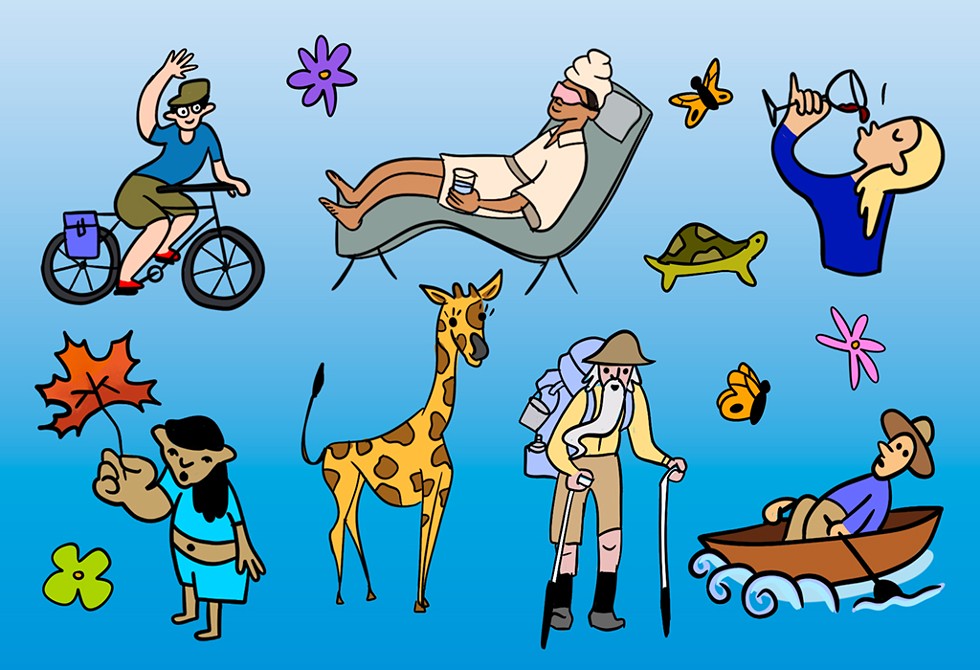
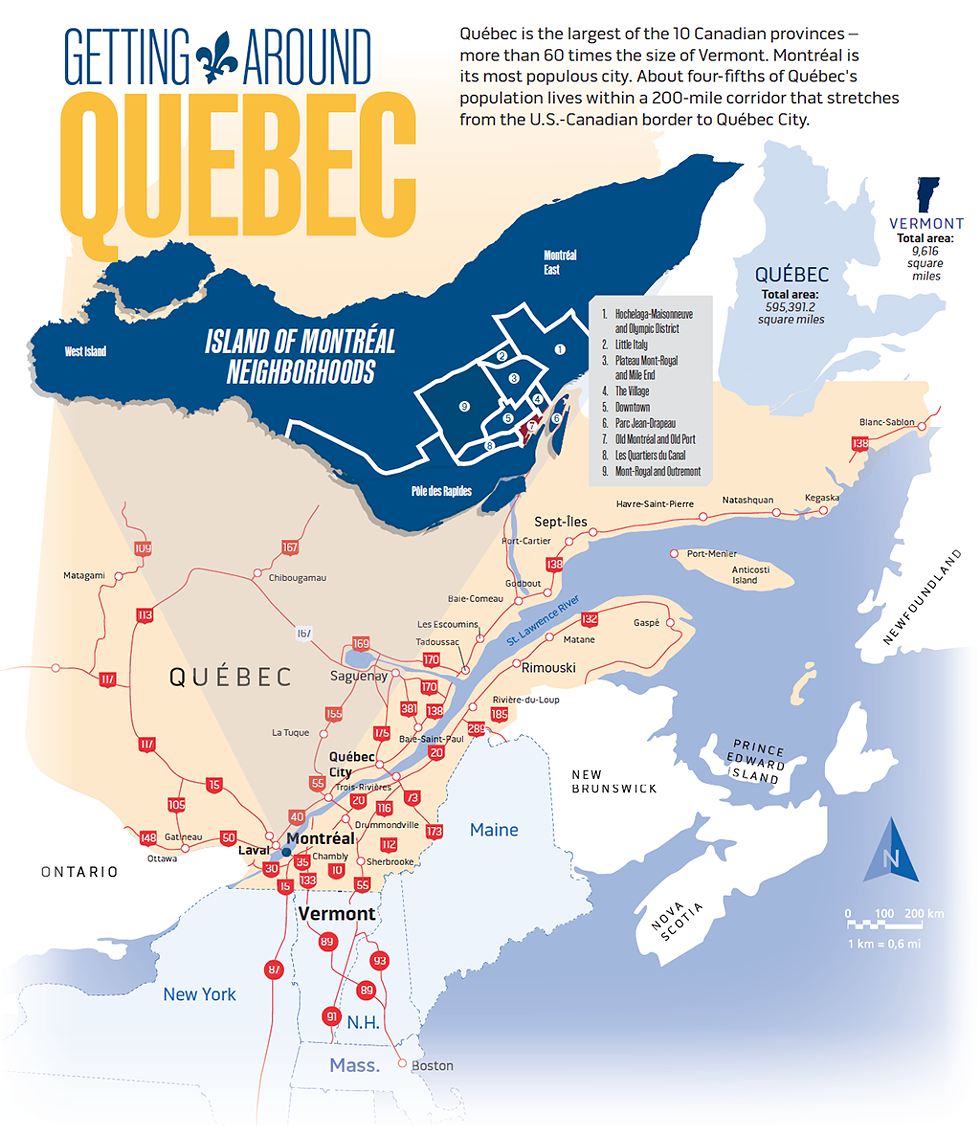
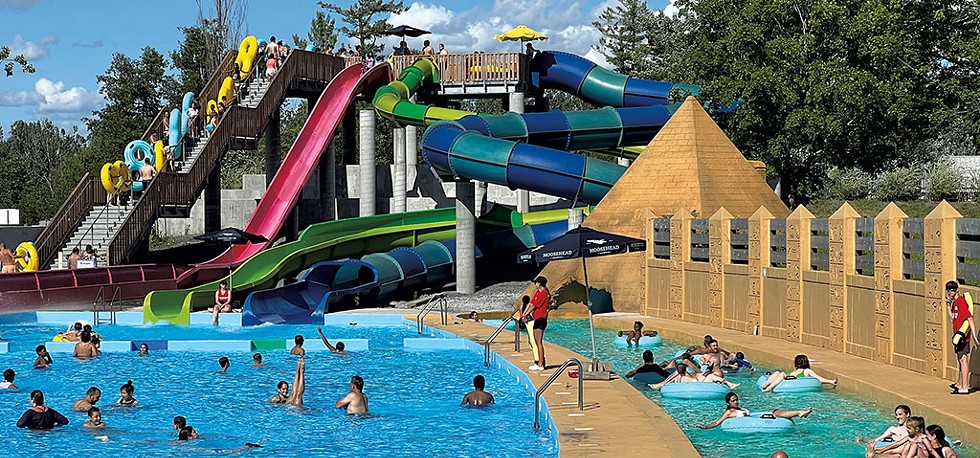
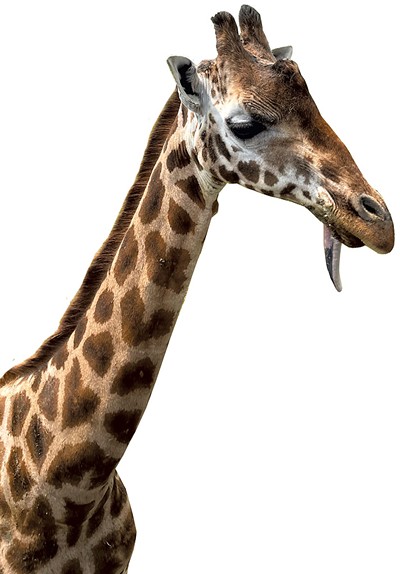

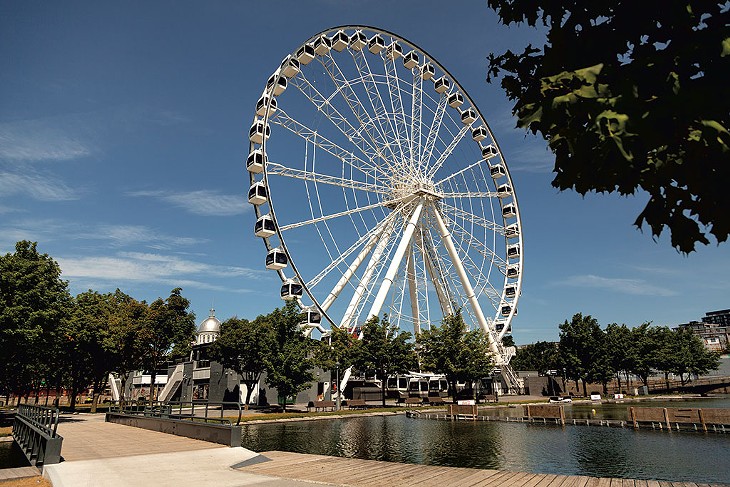
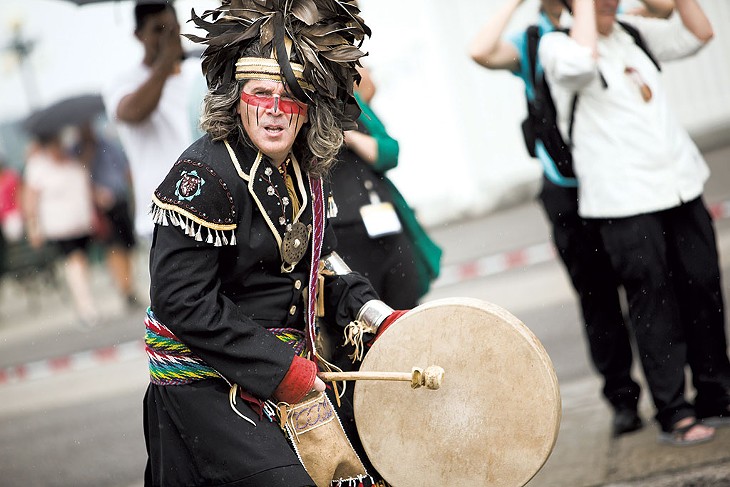

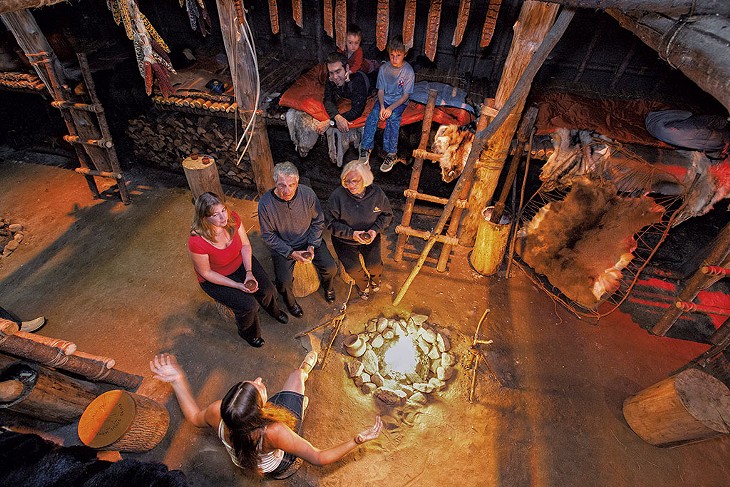
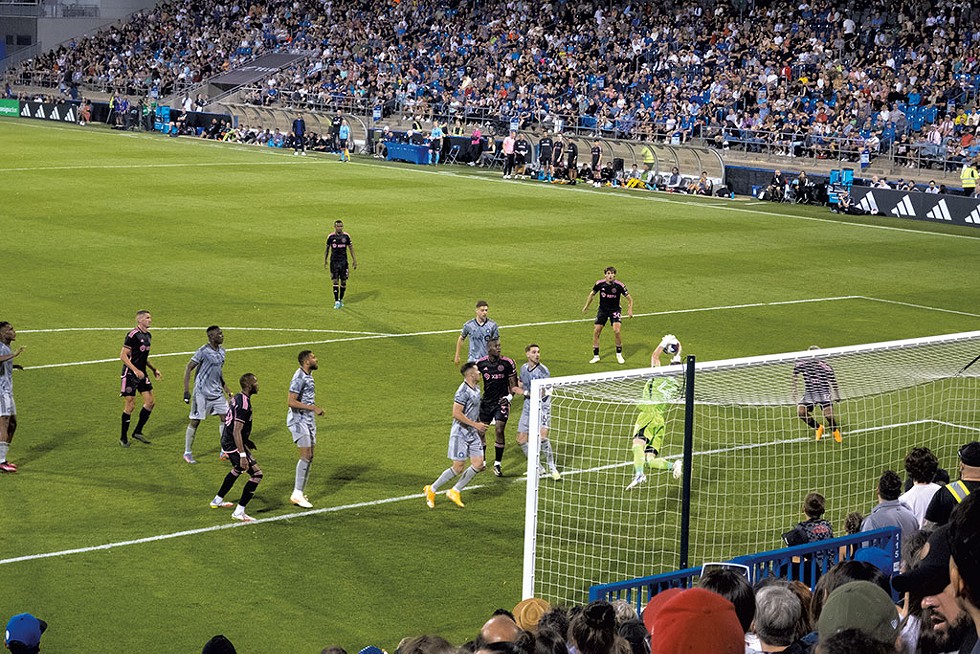
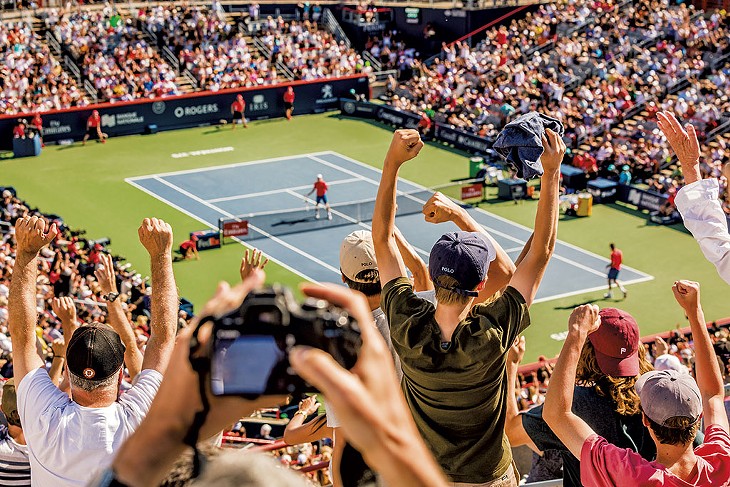


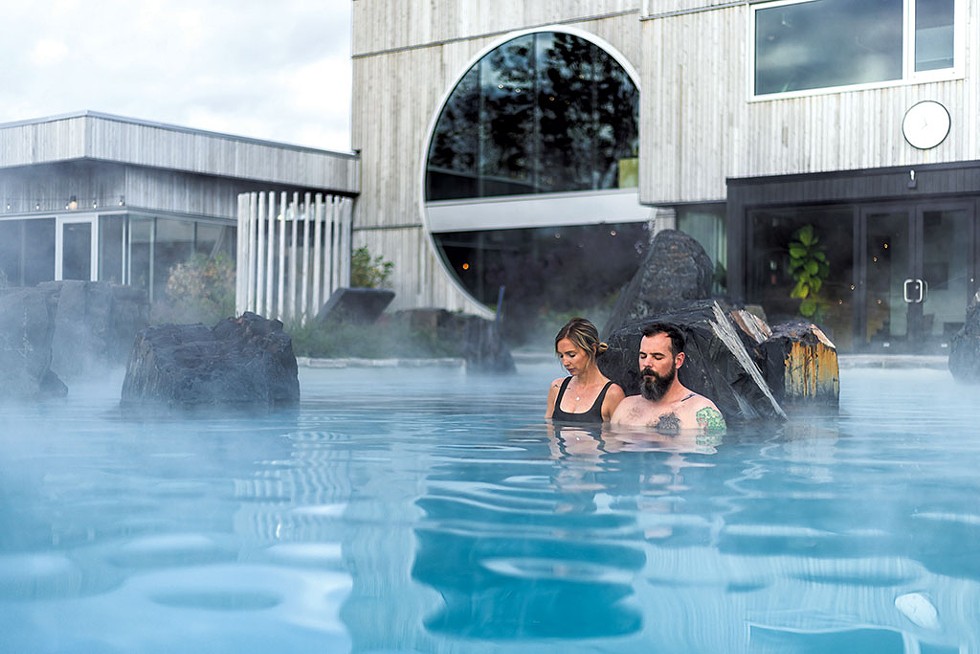
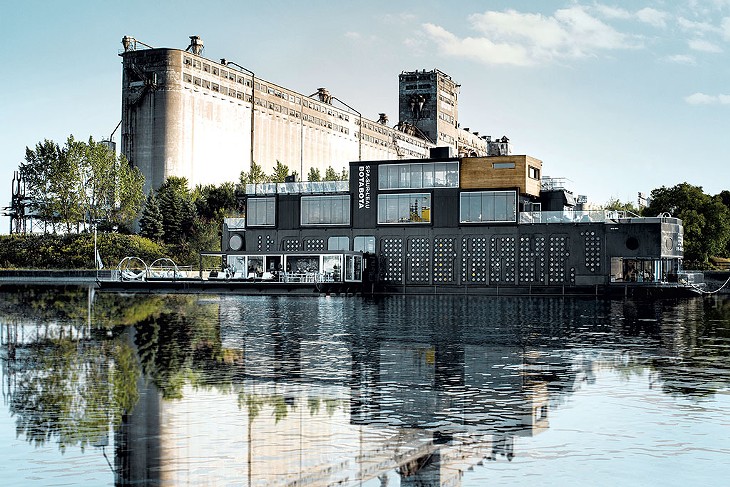
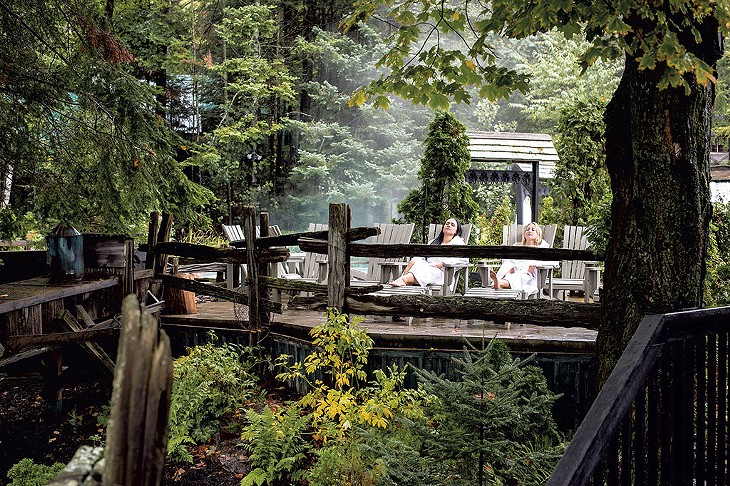

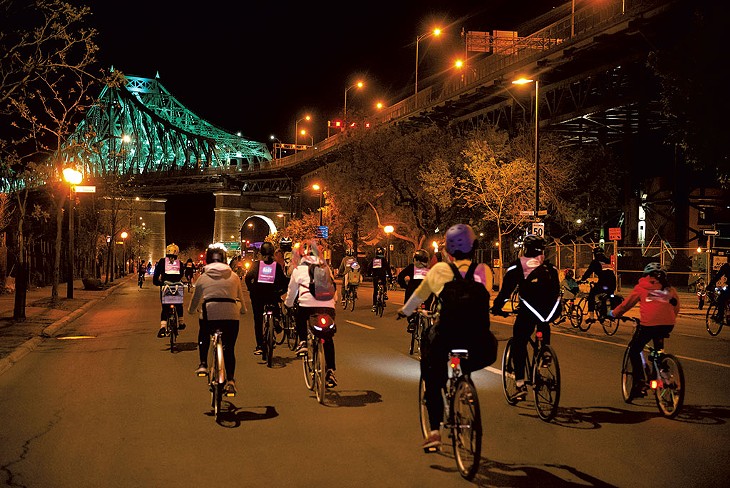
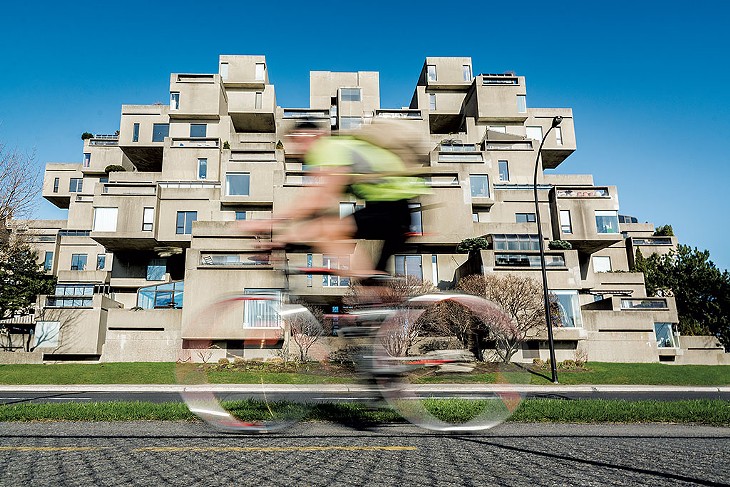
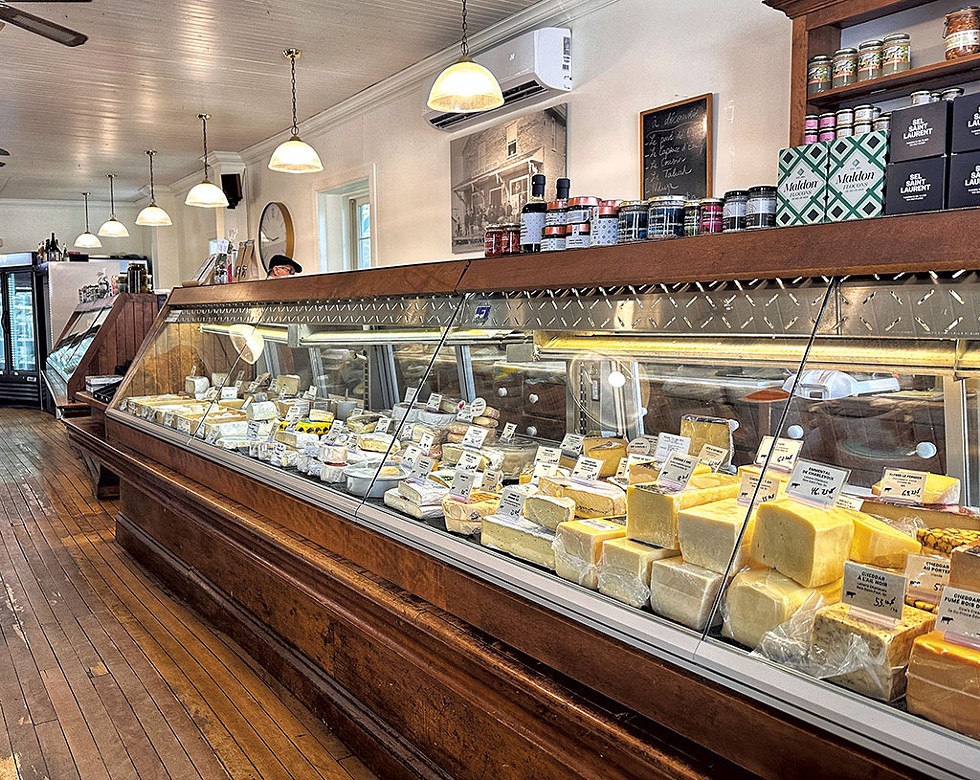
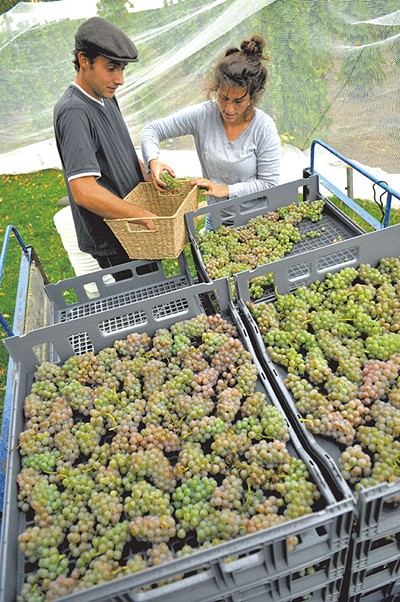
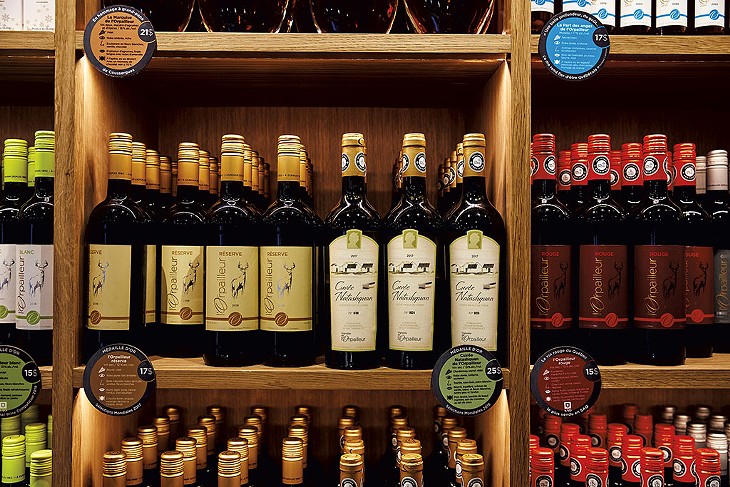
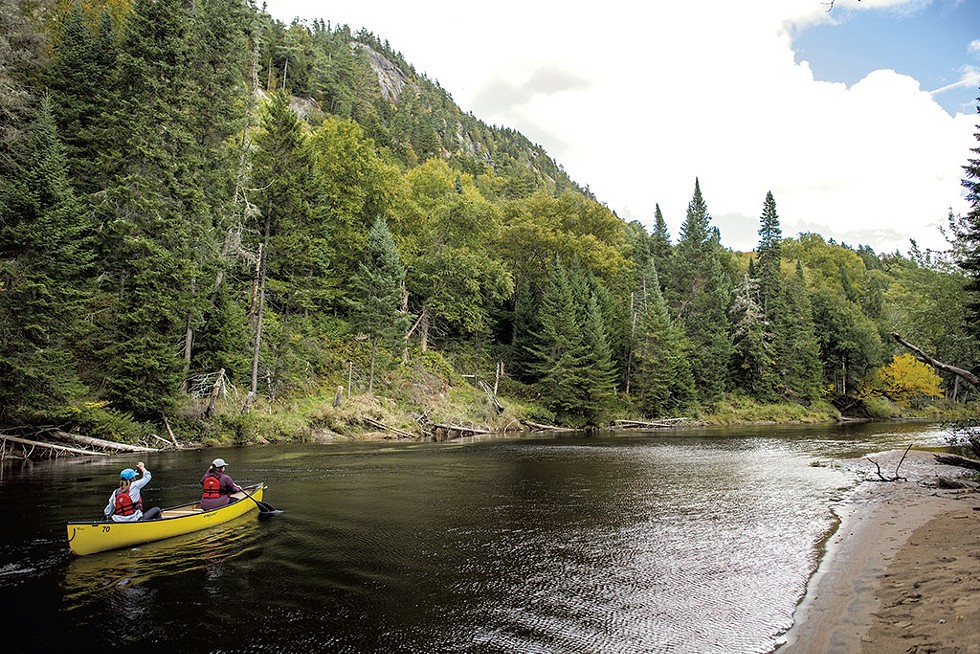
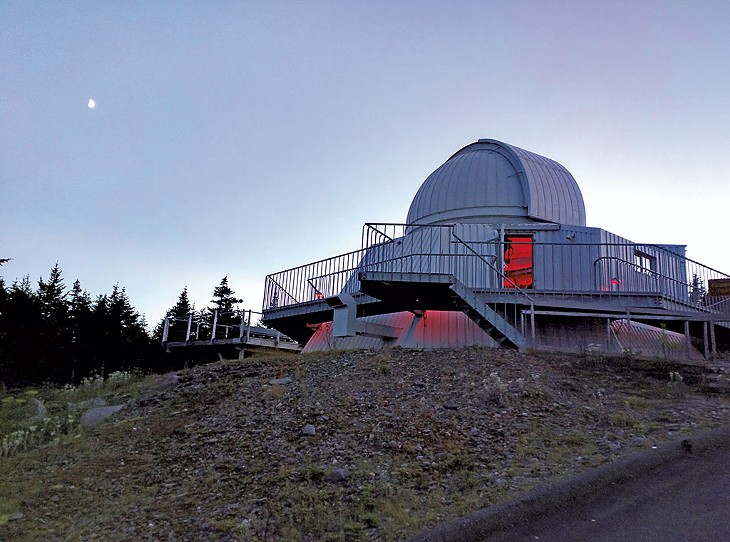
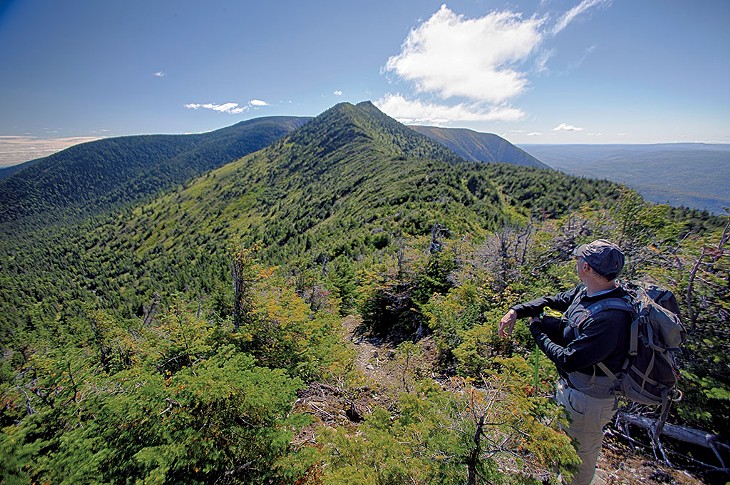
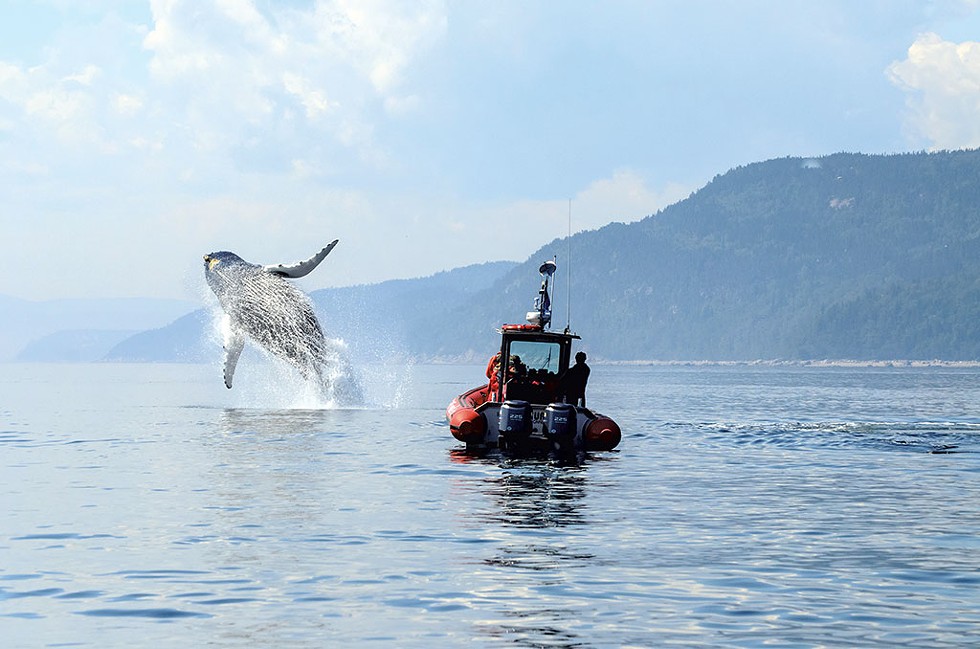
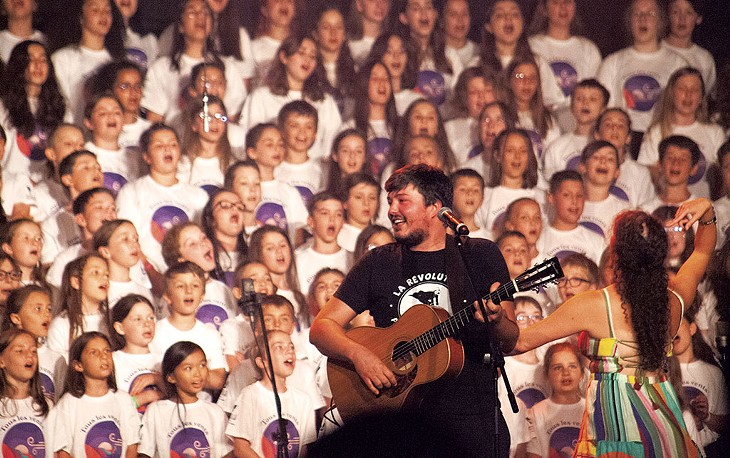
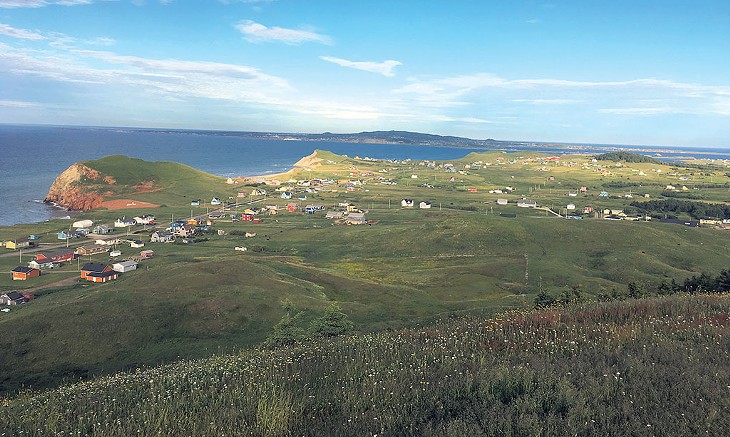

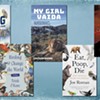


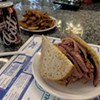
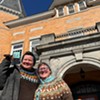

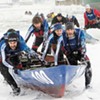



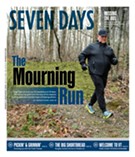
find, follow, fan us: